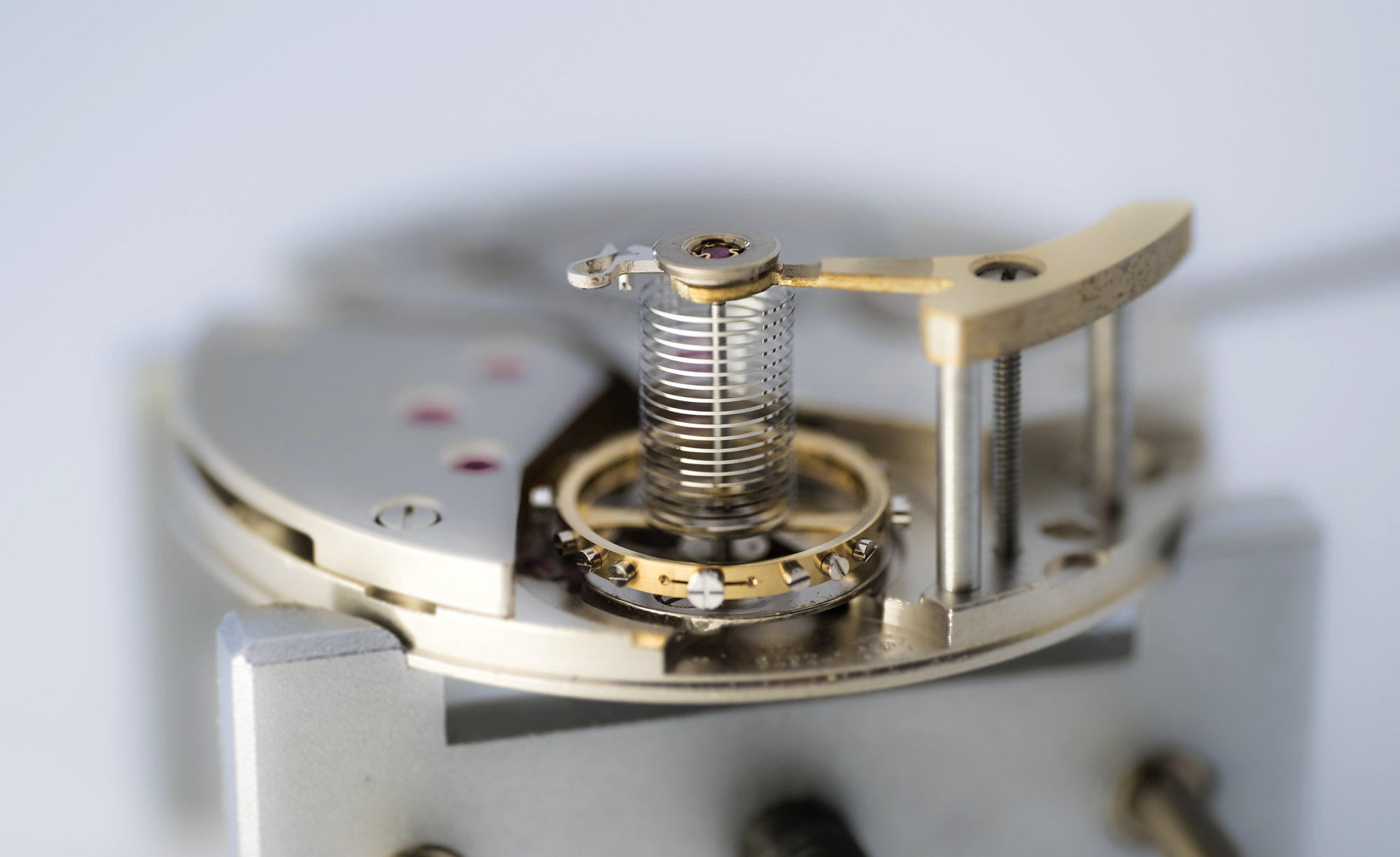English watchmaker, John Arnold, invented the cylindrical hairspring in the 18th century and it has been used, particularly on marine chronometers, ever since.
In comparison to a flat hairspring (balance spring) as used on most modern mechanical watches, the concentric shape of a cylindrical hairspring allows it to rise perpendicularly around the upper stem of the balance spindle, therefore it works more efficiently on the axis of its pivots.
According to Precision Engineering AG, “…unlike the flat hairspring, whose opposite ends have a tendency to exert an excess force on the pivots, despite Philips or Breguet terminal curves, which were specifically developed to partly correct the non-concentric opening of the hairspring.”
Therefore, a cylindrical hairspring, fitted with a Breguet curve attached at two points, reduces friction on the pivots greatly improves isochronism.
A modern flat hairspring works perfectly fine but in an effort to further chronometry, Precision Engineering AG decided to develop the cylindrical hairspring.
However, despite being more isochronous than a more common flat hairspring, the cylindrical type requires much more space as you can see in the picture, or in the Jaeger-LeCoultre Duometre a Spherotourbillon, which also features this type of spring.
Very few companies have the in-house know-how and equipment to produce hairsprings, let alone the more complex cylindrical springs. A. Lange & Sohne (which makes the spring for JLC’s Sphereotourbillon) and now Moser by way of Precision Engineering AG, are the only two I can think of that have this capability. Although it’s worth noting that Hamilton Watch Co. applied for a patent on a cylindrical hairspring in 1943 and it was granted in 1948.
Achieving isochronism on the spring balance is one of the main goals for the watchmaker. With a flat hairspring, the opening is not concentric and leads to friction due to movement of the center of gravity. As a result, this disrupts the isochronism. Precision Engineering AG is continuously working to develop its expertise in order to provide its customers with products that are always high performing. It is with this in mind that the company decided to take on a new challenge by developing a cylindrical hairspring.


